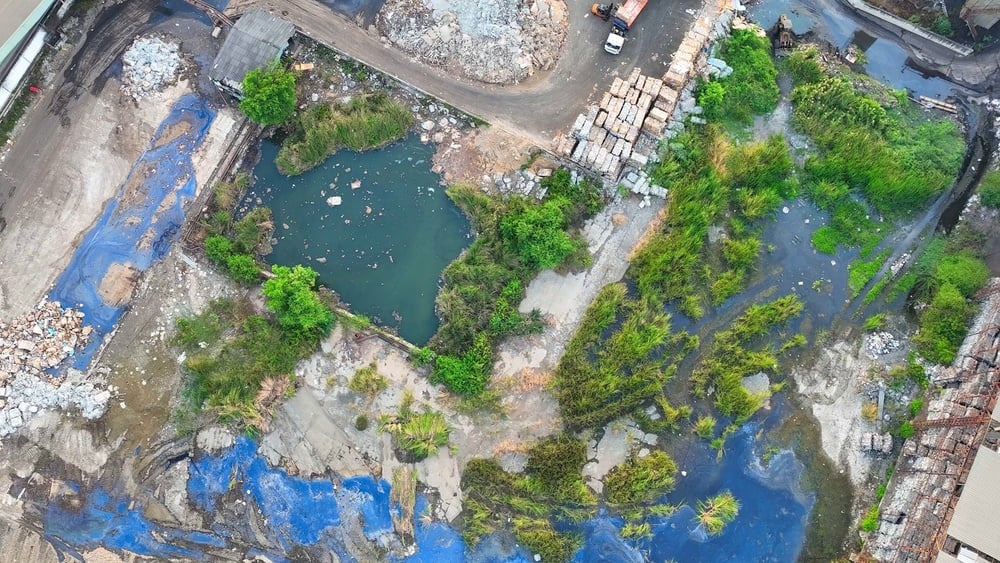A powerful business case can always be made for a company providing substantial funding to meet its environmental compliance obligations and objectives. The reason for this is simple: doing so produces net benefit to a company’s bottom line and reputation, bringing value in ways both tangible and intangible, financial and non-financial. But since no company has unlimited resources to devote to any of their initiatives (as noble and important as they may be), environmental compliance expenditures should be targeted toward what generates the greatest returns and evaluated regularly for tip-top performance in the same manner advertising or payroll dollars are focused and assessed.
Part One of this two-part post discussed building the framework for cost-conscious environmental compliance with an enthusiastic and well-informed workforce operating within a supportive organizational culture. Today we will look at several practical, palpable ways to get the most out of your budgeted dollar and identify some savings opportunities in an effort to reach maximum levels of environmental compliance within your company.
What Really Matters
Environmental compliance is about protecting people and the environment while staying out of trouble with the various governmental agencies tasked with regulating businesses in this regard. As such, spending should directly align with these aims to the greatest extent possible. When planning ahead, you should first consider the past by identifying compliance shortfalls experienced in previous years, perhaps even under your predecessor’s watch.
A good first step would be to compile all regulatory agency inspection reports and violation notices issued to your facilities over the last, say, ten years, and any self-inspections or audit data you can get your hands on. Recognizing any areas of proven vulnerability and problematic patterns of noncompliance is essential to curtailing their future costly effects. Most regulatory agencies have a tiered system of enforcement whereby repeat noncompliance is met with an increasingly harsh response, including severe monetary penalties and fines, or worse. In other words, first time offenses can be met with a slap on the wrist while recidivism can be met with the hammer. Try to avoid the hammer by prioritizing resource deployment to these special areas.
Another advisable step to take while evaluating the effectiveness of your current environmental compliance program and its cost is to obtain current copies of regulatory agency inspection report templates— the actual checklists used by government auditors during visits to your facilities— and see if what you are doing matches up to what you are expected to be doing. The good news is that environmental compliance audits are open-book tests. There are no tricks or surprises and the reference material is always available to you. This will require you to figure out who exactly has jurisdiction over your specific locations (oftentimes, two or more agencies share responsibility for administering and enforcing environmental law), visiting their web sites or making a couple of quick phone calls and spending some time reviewing the documents.
While any potential non-compliant practice or condition is a serious matter for a business, some are more serious than others. Not all violations are created equal. Most agency inspection forms break down compliance issues into classes, with higher priority items leading to higher stakes consequences. What the presiding regulatory agencies consider to be most important should also be most important to you as you plan, develop and budget. Typically, the more serious violation classes involve matters of employee safety and harmful releases into the environment.

Review and Renew
When beginning to assess past and current environmental compliance expenditures to verify delivery of maximum impact, a natural place to start would be in the area of permitting. In most jurisdictions, especially those inside of environmentally progressive states like California, businesses are required to carry multiple governmental agency permits for hazardous materials handling, hazardous waste generation, storage tanks and other regulated equipment, air emissions, storm-water management and more. Many of these permits can be quite costly and are issued on auto-repeat, annually, based on what was originally deemed suitable for your business at the time of its onset. And the reality is that these get paid quietly behind the scenes with no further examination.
When was the last time you reviewed permit terms and requirements and made sure that they are still in alignment with what is currently taking place in your operation? Permits can be issued to businesses in tiers, based on number of employees, total hours worked, total revenue, quantities and types of hazardous materials on-site, volume of hazardous waste generated each year, and many other factors. It is quite common for these variable figures to shift from one year to the next, or trend a certain way over a period of years that can lead to over-permitting and unnecessary expense to a business, which should be corrected.
I know what you are thinking: What if this review leads to the discovery of under-permitting and the need for additional or more expensive permits? My answer would be this: It is better to find this out yourself and address proactively than have an inspector do it for you and then impose retroactive fees and penalties for the past noncompliance.
Another piece of low-hanging fruit ripe for review is your relationship with third-parties. In most cases, the bulk of budgeted expense for environmental matters goes to service vendors and consultants. While this topic is probably better suited for a future blog post of its own due to urgent spatial constraints, the concept of keeping vendors and consultants on their toes with both performance and cost is exceedingly important to mention here, if only briefly. If you are to succeed in maximizing both compliance and cost efficiency, your external partners must understand exactly what it is that you want and need, be sensitive to your budget objectives, be highly skilled and efficient themselves, be subjected to intensive periodic review, and be held accountable for their performance.
Planning Is Essential
The final point I will make here involves expenditures that may only be necessary every five to 20 years and those pesky one-time, one-off expenses that can wreak havoc to an ill-prepared annual budget. This spending addresses certain longer-term statutory compliance requirements (such as tank integrity testing or SPCC plan amendment), the maintenance or replacement of pricey equipment or other unforeseen necessities and contingencies. Since most company environmental expense is earmarked on a monthly or annual basis— frequencies that easily line up with boardroom budget-setting sessions—these irregular and hard-to-predict items tend to fall through the cracks and cause much heartache and despair when they pop up. In short, my advice is to learn as much as possible and be prepared for them by setting and keeping reasonable reserves. Planning ahead allows for a much easier go when the time comes compared to the “all at once” budget-busting alternative.




